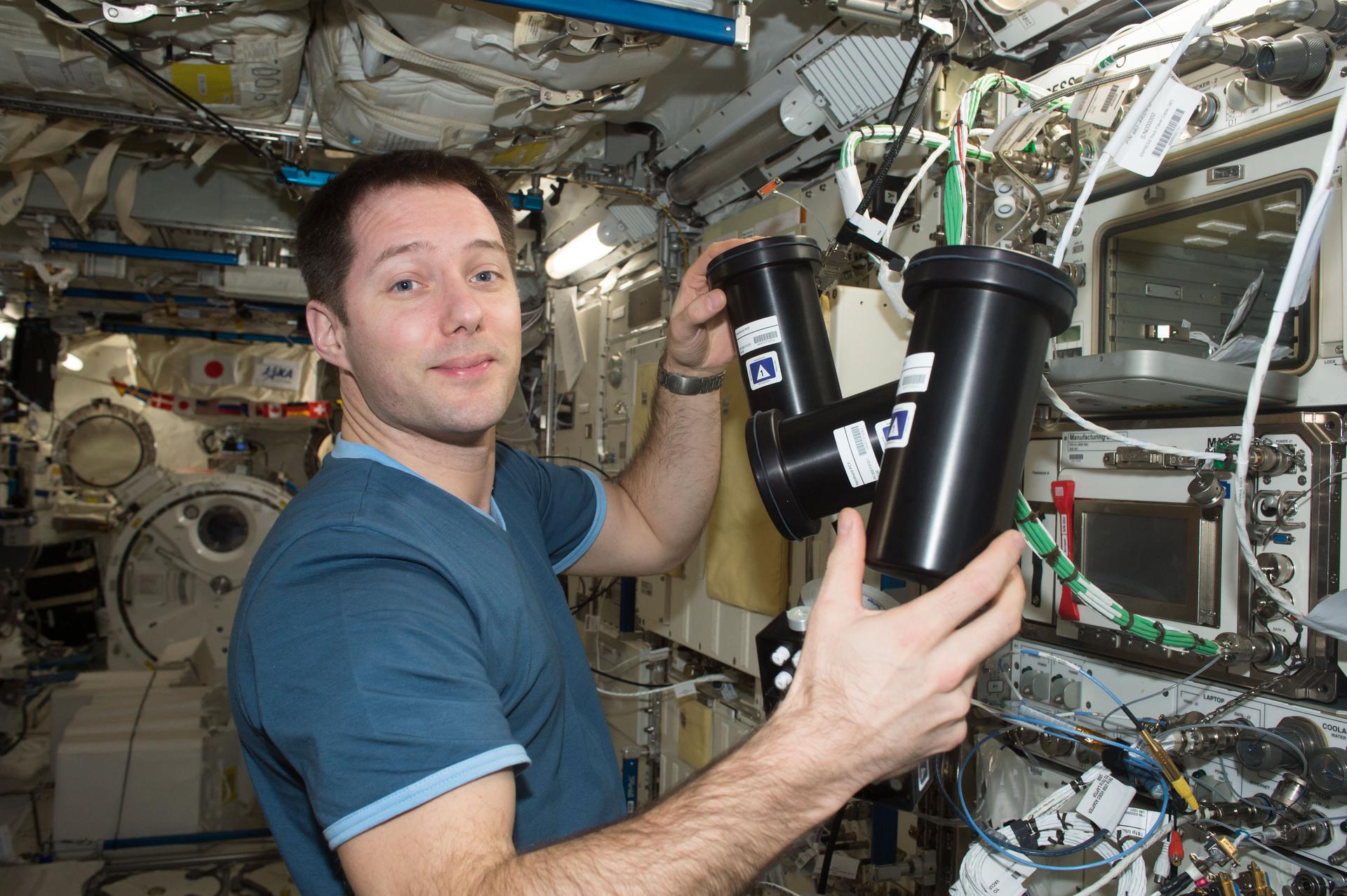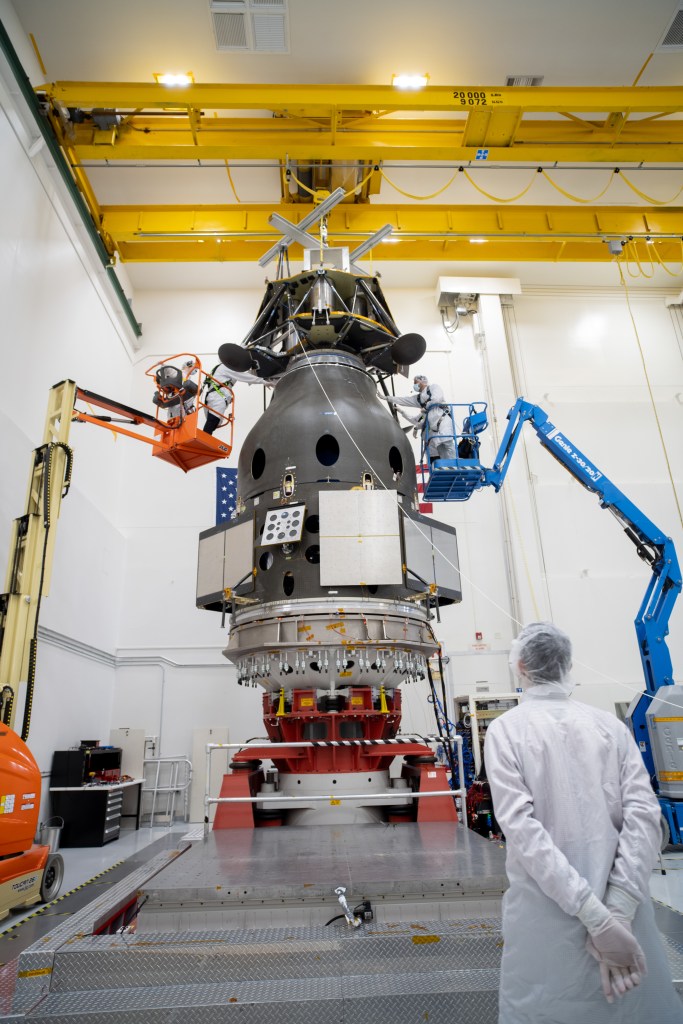At the top of the ARADS rover, seen here during testing in Chile’s Atacama Desert, is a gray cylinder that spins. This is part of the lidar, short for “light detection and ranging”, system, which works something like radar, but uses pulses of laser light. Sensors detect the light bouncing back off of objects and allow the rover to create a 3D digital map of the terrain and any obstacles around it. This helps it navigate independently and lets the rover’s human operators plot its next big move.
Engineer Antoine Tardy is shown here installing a metal funnel on the ARADS rover. The funnel will catch a soil sample dug up by the rover’s drill and delivered autonomously by a robotic arm, sending the dirt to be analyzed in one of three instruments housed below. To prevent contamination in between test runs, Tardy wears a mask, and the drill and other hardware that comes in contact with the samples are wrapped in aluminum foil.
+++
The Atacama Rover Astrobiology Drilling Studies, or ARADS, project is designing tools and techniques that could be used to search for life one day on Mars or other places in the Solar System. The team’s prototype rover combines the ability to move across the surface, drill down to collect soil samples, and feed them to several life-detection instruments on board. The extreme conditions of Chile’s Atacama Desert provide one of the most Mars-like environments on Earth, where the team can test and refine these technologies and methods.
ARADS is led by NASA’s Ames Research Center in California’s Silicon Valley. Partners include NASA centers Goddard Space Flight Center in Greenbelt, Maryland, and the Jet Propulsion Laboratory in Pasadena, California, as well as Johns Hopkins University in Baltimore, Maryland, Honeybee Robotics in New York, the University of Antofagasta and CampoAlto SpA, both in Chile, and Spain’s Center for Astrobiology.




























